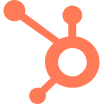What Is Sales Enablement?
Sales enablement is the process of giving your sales team the tools, training, and resources they need to succeed. Think of it as their secret weapon—everything from content and playbooks to tech tools and coaching is designed to help them close deals more effectively. At its core, sales enablement is about empowering reps to work smarter, not harder.
Why Sales Enablement Matters
Without sales enablement, reps spend valuable time hunting for information or figuring things out on their own. This leads to missed opportunities and inconsistent results. A solid enablement program solves this by streamlining processes, aligning teams, and ensuring everyone is on the same page. The result? Faster sales cycles, better customer experiences, and more wins.
How Sales Enablement Boosts Sales
Sales enablement turns strategy into action. By equipping reps with the right resources—like tailored training, CRM tools, and content—they can focus on building stronger connections with prospects. It also helps identify what’s working (and what’s not), so you can continuously improve. The impact? Higher close rates, happier customers, and a thriving sales team.

Helping Sales Teams Find New Leads
Key Concepts and Components of Sales Enablement
1. Sales Content Management: Think of Sales Content Management as the library where all your sales team’s best books (aka content) live. Whether it’s brochures, case studies, or pitch decks, organizing them neatly means your sales team can grab what they need without a frantic search. It’s like having a superpower where every piece of content is at your fingertips, ready to tackle any customer question or concern.
2. Training and Onboarding: Picture this: every new salesperson is a superhero in training. Training and onboarding are their boot camps. Effective training programs equip sales reps with product knowledge, sales tactics, and the confidence to win clients. Plus, ongoing training keeps your seasoned pros sharp and in-the-know about the latest strategies and tools. Think of it as turning your sales team into a band of superheroes, continually leveling up their powers!
3. Sales Engagement Tools: Sales Engagement Tools are the gadgets in your sales utility belt. They include everything from email tracking systems to call management software. With these tools, not only can you keep in touch with prospects efficiently, but also gain insights into what strategies work best. It’s like having a crystal ball that shows how and when to engage prospects, turning cold calls into warm handshakes.
4. Performance Analytics and Reporting: Imagine having a dashboard that tells you exactly how close you are to hitting your sales targets. Performance analytics and reporting provide real-time insights into each team member’s performance. This data is crucial for recognizing achievements, identifying areas for improvement, and strategically planning future actions. It’s like having a fitness tracker for your sales health—keeping you informed and focused on beating your best.
5. Integration with CRM Systems: Integration with CRM (Customer Relationship Management) systems is like the glue that holds all aspects of sales enablement together. It ensures that information flows seamlessly between marketing and sales, enhancing collaboration and communication. This integration allows sales reps to have a 360-degree view of customer interactions, making every contact well-informed and personalized, dramatically smoothing the path from introduction to sale.
Practical Applications and Real-World Examples of Sales Enablement
Streamline Onboarding and Training
Imagine you’ve just hired a team of eager new sales reps. Instead of thrusting them into the wild with a stack of product manuals, you use sales enablement strategies to get them up to speed quickly and efficiently.
- Develop interactive training modules: These modules can include roleplaying scenarios that simulate real sales conversations, helping new hires learn in a handson way.
- Use video demonstrations: Showcase top performers in action to provide clear examples of successful selling techniques.
- Result: New hires become productive faster, reducing rampup time and boosting overall team performance.
Enhance Sales Team Efficiency
Your sales team is good, but you know they could be great with the right tools and information at their fingertips. Sales enablement provides just that, making sure every rep has what they need to close deals more effectively.
- Implement a CRM system: Ensure all customer information is centralized and accessible, minimizing time spent searching for client data.
- Create a centralized repository of sales materials: This could include case studies, product sheets, and FAQs, all easily accessible to help tailor pitches to specific clients’ needs.
- Result: Sales cycles shorten, and conversion rates improve, as reps spend more time selling and less time searching for information.
Leverage Analytics for Continuous Improvement
You’ve got a decent grasp on your sales processes, but you sense that there’s room for improvement. By harnessing the power of data through sales enablement tools, you can identify bottlenecks and opportunities for growth.
- Monitor analytics to identify trends: See which parts of the sales process are slowing down deals or where most losses occur.
- Provide regular feedback and training: Based on data insights, offer targeted coaching sessions to address specific weaknesses in the sales strategy.
- Result: Your sales process becomes more dynamic and adaptable, leading to increased efficiency and higher revenue.
Common Mistakes and Misunderstandings with Sales Enablement
Equating Sales Enablement With Just Training
It’s a common scene: organizations pump resources into sales training sessions and then pat themselves on the back for ‘enabling’ their sales teams. While training is crucial, sales enablement is not just a jazzy, one-off training seminar—it’s an ongoing process designed to empower sales teams with tools, content, and information to sell more effectively.
Tip: Broaden your sales enablement approach to include ongoing support, such as easy-to-access selling tools and regularly updated content libraries. Think of it as keeping your toolbox not just shiny but also stocked.
Misunderstanding Who Needs Enablement
Sales enablement isn’t only for the newbies. Yes, newcomers need to get up to speed, but even seasoned veterans can benefit from new tools, data, and strategies. Assuming that experienced salespeople don’t need enablement is like assuming a seasoned chef wouldn’t want a new set of knives. Everyone can up their game with the right resources.
Tip: Develop a continuous learning culture where sales enablement is part of the daily routine for all team members, from rookies to seasoned pros. It’s like upgrading everyone’s chef’s knives, regardless of how many Michelin stars they have.
Overloading With Tools and Content
Ever walked into a room so cluttered you couldn’t find what you needed? That’s how sales teams feel when bombarded with too many tools and pieces of content. More isn’t always better. A flood of resources can overwhelm your team, causing paralysis by analysis rather than facilitating effective selling.
Tip: Curate and streamline. Select tools and content that directly support your sales cycle stages and buyer personas. Think of it as Marie Kondo-ing your sales enablement strategy—if it doesn’t spark selling joy, thank it and let it go.
Ignoring Analytics and Feedback
Rolling out tools and content without monitoring their effectiveness is like shooting arrows in the dark. Sales enablement thrives on feedback and data-driven insights. Without them, you won’t know if the resources are truly making a difference or just taking up space.
Tip: Implement a feedback loop with regular check-ins and analytics review sessions. Use data to refine your tools and strategies continuously, ensuring they work effectively for your team—like having a dashboard that tells you if you’re winning the race.
Underestimating the Power of Alignment
Often, there’s a disconnect between what marketing thinks sales needs and what sales truly needs. This misalignment can render sales enablement efforts ineffective. It’s like trying to complete a puzzle with pieces from different sets. No matter how hard you try, they just won’t fit perfectly.
Tip: Foster regular alignment sessions between your sales and marketing teams. Making sure everyone is on the same page turns those mismatched puzzle pieces into a coherent, beautiful picture.
Expert Recommendations and Best Practices for Effective Sales Enablement
Foster Alignment Across Teams for Unified Strategies
Sales enablement works best when sales, marketing, and customer success teams are aligned. Establish regular collaboration sessions to ensure marketing delivers content that sales actually uses, and sales provides feedback on what resonates with prospects. For instance, a shared dashboard tracking content performance can help refine messaging in real time, creating a cohesive strategy that drives results.
Focus on Enabling Reps for Every Stage of the Buyer’s Journey
Equip your sales team with tailored tools and resources for each stage of the sales cycle. Provide customer pain-point guides for the discovery phase, case studies for the evaluation stage, and ROI calculators for final decision-making. This ensures reps always have the right material to keep conversations moving forward and improve win rates.
Streamline Knowledge Sharing
Ensure your team has quick access to crucial resources without hunting through multiple systems. Use a centralized platform with intuitive search capabilities for instant access to training materials, playbooks, and customer insights. Regularly audit the content to keep it up-to-date and relevant, eliminating outdated or redundant resources that waste time.
Integrate Enablement Tools into Reps’ Daily Workflow
Choose tools that fit seamlessly into your team’s existing workflows. For instance, integrating sales engagement tools with your CRM allows reps to manage emails, calls, and follow-ups without toggling between platforms. The easier the tools are to use, the more likely reps will adopt them—and the greater their impact will be on productivity.
Encourage Peer-to-Peer Learning
Sales teams can learn as much from each other as from formal training. Create opportunities for top performers to share their techniques, such as through recorded role-play sessions, Q&A panels, or shadowing opportunities. This fosters a culture of shared growth and allows reps to pick up proven tactics they can implement immediately.
Leverage Data to Continuously Improve
Sales enablement isn’t a “set it and forget it” initiative—it’s a dynamic process. Regularly review performance metrics to identify gaps, such as underutilized tools or content with low engagement. Use this data to refine your enablement strategy, ensuring resources are effective and aligned with evolving team needs.
Conclusion
Sales enablement is more than just a buzzword; it’s your secret tool for supercharging your sales team’s effectiveness. By equipping your team with the right information, tools, and content at the right time, you empower them to sell more efficiently and effectively. Think of sales enablement as the Swiss Army knife in your sales toolbox — it’s versatile, indispensable, and always ready to help tackle any sales challenge that comes your way.








